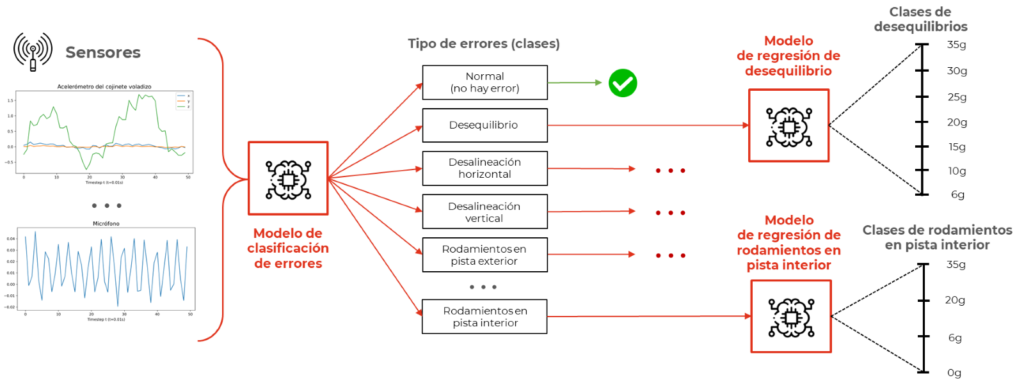
The Data & AI Cluster Engages in Predictive Maintenance for Industry
Most industrial companies with production lines in logistics plants lack real-time insights into the health of their machinery. They rely on maintenance sessions—akin to small blood samples—to estimate a machine’s likelihood of critical failure or to determine if a failure has already occurred. This approach is known as preventive maintenance.
Preventive maintenance sessions are scheduled conservatively, meaning they occur frequently to reduce the risk of critical production failures that could lead to significant financial losses. However, this high frequency also results in additional costs that could be optimized with better management.
Another approach is condition-based maintenance, where maintenance is performed when an issue is detected. However, by the time an error is identified, it is often too late or leaves little room for correction, leading to rushed responses that can, in turn, cause future failures.

The predictive maintenance model combines the strengths of preventive and condition-based maintenance by leveraging artificial intelligence to forecast when maintenance tasks will be needed well in advance. This approach ensures optimal machine performance while reducing unnecessary maintenance sessions, leading to cost optimization.
The Data & AI Cluster’s proposed solution focuses on identifying key metrics that can effectively model machine health. Once these metrics are established, the next step involves deploying sensors to collect real-time data and developing a predictive maintenance model.
The system is based on a functional architecture where sensors continuously gather machine data and store it in an IoT infrastructure. The collected data undergoes processing before being sent to a database that maintains historical records, including past machine errors. The processed data is also displayed on a dashboard for real-time monitoring.
An AI model is then trained to analyze historical data and its correlation with past failures, allowing it to predict future errors days, weeks, or even months in advance. These predictions can also be stored in the database and visualized on the dashboard for proactive decision-making.
A key contributor to the technological development of this project is Alejandro Ramos, a member of the Data & AI Cluster, under the leadership of Gema Atienza. The team remains committed to delivering advanced tools that enhance efficiency across the industrial sector.


